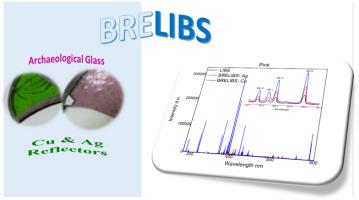Analytica Chimica Acta ( IF 5.7 ) Pub Date : 2021-09-04 , DOI: 10.1016/j.aca.2021.339024 Mohamed Abdel-Harith 1 , Asmaa Elhassan 2 , Zienab Abdel-Salam 1 , Mona F Ali 3

|
A straightforward and simple method has been proposed in the current work to improve the signal-to-noise ratio of the LIBS spectrum of transparent samples. The idea is to benefit from a highly polished metallic reflector in direct contact with the rear surface of the transparent target. Copper and silver metals have been used as reflectors for the focused laser beam and force it to pass through the plasma plume induced initially onto the front surface of the target. The reflected laser beam reheats the plasma plume increasing the intensity of the light emitted from it. In such a case, the obtained LIBS spectrum accomplishes a pronounced increase in the signal-to-noise ratio compared to the spectrum obtained without a reflector. The new amendment of the LIBS technique setup has been exploited for the elemental analysis of colored glass fragments from archaeological Egyptian Synagogue windows. Quantitative analysis of the samples using the calibration-free LIBS (CF-LIBS) approach has been performed. The results depicted three-to four-fold enhancement in the spectral lines' intensity depending on the glass color and thickness. The results have been validated by the quantitative analysis of the same samples via the Energy-Dispersive X-ray spectroscopy (EDX). The CF-BRELIBS results were in pronounced agreement with that of the EDX.
The back-reflection-enhanced laser-induced breakdown spectroscopy (BRELIBS) can be applied to analyze numerous transparent target types such as different glass types, gemstone, plastics, polymers, etc.
中文翻译:

透明材料上的背反射增强激光诱导击穿光谱 (BRELIBS):在考古玻璃上的应用
目前的工作已经提出了一种直接而简单的方法来提高透明样品的 LIBS 光谱的信噪比。这个想法是受益于与透明目标的后表面直接接触的高度抛光的金属反射器。铜和银金属已被用作聚焦激光束的反射器,并迫使其穿过最初诱导到目标前表面的等离子体羽流。反射的激光束重新加热等离子体羽流,从而增加了从其发出的光的强度。在这种情况下,与没有反射器的情况下获得的光谱相比,获得的 LIBS 光谱实现了信噪比的显着增加。LIBS 技术设置的新修订已被用于对埃及犹太教堂考古窗户的彩色玻璃碎片进行元素分析。使用免校准 LIBS (CF-LIBS) 方法对样品进行了定量分析。结果表明,取决于玻璃颜色和厚度,光谱线强度增强了三到四倍。结果已通过能量色散 X 射线光谱 (EDX) 对相同样品的定量分析得到验证。CF-BRELIBS 结果与 EDX 的结果明显一致。强度取决于玻璃的颜色和厚度。结果已通过能量色散 X 射线光谱 (EDX) 对相同样品的定量分析得到验证。CF-BRELIBS 结果与 EDX 的结果明显一致。强度取决于玻璃的颜色和厚度。结果已通过能量色散 X 射线光谱 (EDX) 对相同样品的定量分析得到验证。CF-BRELIBS 结果与 EDX 的结果明显一致。
背反射增强激光诱导击穿光谱 (BRELIBS) 可用于分析多种透明目标类型,例如不同的玻璃类型、宝石、塑料、聚合物等。











































 京公网安备 11010802027423号
京公网安备 11010802027423号